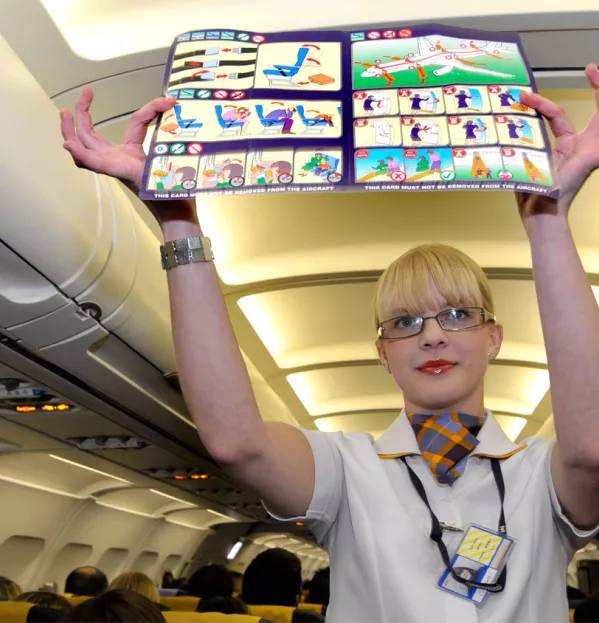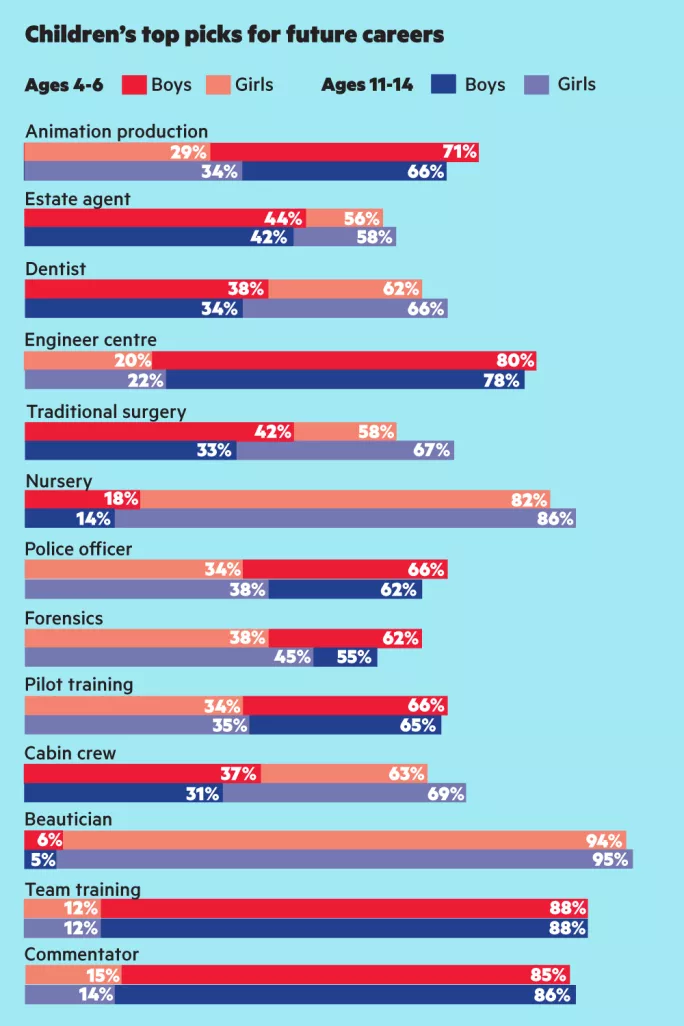Pilot or cabin crew? Gender split fixed before school

It will be of little surprise to Reception teachers that boys are more likely to choose firefighter as an occupation, while girls might want to be a nurse. But a major new study also reveals that the gender divide is as strong at age 4 as it is at 14.
The figures, based on responses from hundreds of thousands of children, reveal that gender stereotypes about potential career choices are firmly in place well before the teenage years and then remain.
The data therefore raises significant questions about the impact of high-profile interventions designed to encourage girls to study Stem subjects and consider careers in engineering. One teachers’ leader warned this week that society had “gone backwards” on tackling the gender divide.
Acting out jobs
The study of more than 400,000 boys and girls aged between 4 and 14, by KidZania - a children’s amusement centre in which children carry out role-playing activities in a mini-city - reveals that boys are significantly more likely to choose to be a pilot or engineer than girls.
The organisation has collected figures on the career choices that children opt to act out when they enter the “city”. They can choose from a range of occupations including journalist, police officer, pilot and surgeon.
The data shows that even those aged 4 to 6 demonstrate strong gender stereotypes according to the job they pick: 80 per cent of boys in this age range will opt to be a pilot, while just 20 per cent of girls will.
However, when it comes to pretending to be the cabin crew, 63 per cent of girls will choose this as an occupation, compared with just 37 per cent of boys.
A similar picture emerges for engineering, with 80 per cent of boys aged 4 to 6 choosing it as a profession to act out, compared with only 20 per cent of girls.

Mary Bousted, general secretary of the ATL teaching union, said that tackling such stereotypes was difficult for schools and the data was indicative of a wider problem in society.
“The tragedy is we are going backwards,” she said. “In the 1980s, there was lots of work done around gender stereotypes, getting girls into maths and science, and looking at the curriculum and pedagogy. But I don’t think we take the issue seriously enough anymore.”
The data shows that stereotyping is as bad in very young children as it is in their older counterparts: the gender split is roughly the same for each profession at ages 11-14.
Ger Graus, director of education and partnerships at KidZania UK, said the figures show that more needed to be done to raise awareness of possible career choices, particularly for girls, earlier in their development.
“Children can only aspire to be something that they know exists,” Dr Graus said. “They tend to choose to do something that they are already familiar with.
“What this data shows is that gender stereotypes are formed much earlier than you would expect and poses the question of what is happening with these kids up to the age of 4.”
‘Subconscious decision-making’
According to gender equality campaigners, children are exposed to stereotypes from birth, which subconsciously effects their decision-making.
Hanna McCloskey, the founder and chief executive of Fearless Futures, a campaigning charity that aims to empower young women to become leaders in society, said the findings came as no surprise.
“Research has shown that parents will speak to newborn babies differently according to whether they have a penis or a vagina,” Ms McCloskey said.
“Teacher training is really important when it comes to tackling it. We know teachers will often say, ‘Can I get a big strong boy to help me lift this table?’ while they will ask the girls to help them tidy up.
“Similarly, parents have to be engaged, too. Challenging this kind of gender stereotyping has to happen at every single point that we engage with children.”
You need a Tes subscription to read this article
Subscribe now to read this article and get other subscriber-only content:
- Unlimited access to all Tes magazine content
- Exclusive subscriber-only stories
- Award-winning email newsletters
Already a subscriber? Log in
You need a subscription to read this article
Subscribe now to read this article and get other subscriber-only content, including:
- Unlimited access to all Tes magazine content
- Exclusive subscriber-only stories
- Award-winning email newsletters